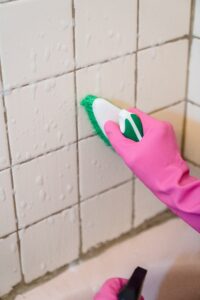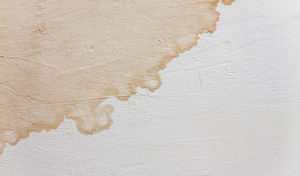Important Checks and Repairs for Water Stains on Walls
Important Checks and Repairs for Water Stains on Walls
Blog Article
Almost everyone seems to have their own individual assumption in relation to Indicators of Water Damage Behind Walls.

Water discolorations on wall surfaces are not pleasant to the eyes. Your house must lack spots on the wall surfaces, roof covering, or floorings. That is the perfect state of a house as well as its frameworks. Yet, sometimes it seems practically unavoidable to experience water stains on walls in homes.
Property owners residing in moist regions continuously handle the fear of water spots on walls. That doesn't have to be the situation for you. With exact and also well-rounded information on the causes of water stains and punctual fixing procedures, you will certainly constantly be a step ahead of such incidents. This article promises to be a helpful overview for you.
3 Common Reasons For Water Stains on Walls
Contrary to common belief, water spots on walls do not always stem from poor structure products. There are numerous reasons for water stains on wall surfaces. These include:
Poor Water drainage
This will certainly avoid water from seeping right into the wall surfaces. This links to excessive moisture that you observe on the walls of your structure.
The leading reason of damp walls, in this situation, can be a poor water drainage system. It can likewise be due to inadequate administration of sewage pipelines that run through the structure.
Moist
When warm moist air consults with dry chilly air, it creates water droplets to base on the walls of buildings. This takes place in washrooms and cooking areas when there is steam from cooking or showers. The water beads can tarnish the surrounding walls in these parts of your house and also spread to other locations.
Wet or condensation affects the roofing and also walls of buildings. This creates them to show up darker than other areas of the house. When the wall surface is wet, it creates an appropriate atmosphere for the development of microbes and fungis. These might have adverse impacts on health and wellness, such as allergic reactions and breathing conditions.
Pipe Leaks
Most houses have a network of water pipes within the walls. This ensures that the pipes are well away from the reach of damaging rodents. It always enhances the practicality of such pipes, as there is little oxygen within the walls. This prevents rust.
Yet, a disadvantage to this is that water leak influences the wall surfaces of the structure as well as causes widespread damage. A telltale sign of faulty pipelines is the look of a water tarnish on the wall surface.
Water Spots on Wall: Repair Work Tips
Property owners would generally want a quick fix when managing water discolorations. Yet, they would certainly quickly recognize this is counterproductive as the water stains reoccur. So, below are a couple of valuable suggestions that will direct you in the repair of water discolorations on wall surfaces:
Pro Tip
A houseplant in your house also boosts its humidity. So, if your house is already moist, you might wish to present houseplants with minimal transpiration. An example of appropriate houseplants is succulents.
Verdict
Although nobody intends to have water spots on walls in their residence, it can happen to the most effective of us. This article provides you utilize, as you now understand just how to handle this incident if it does occur.
It is always best to recruit specialist services to assist deal with the damages in your home.
Occasionally it seems nearly unpreventable to experience water stains on wall surfaces in residences.
Contrary to prominent idea, water stains on walls do not constantly stem from poor building products. There are several causes of water spots on wall surfaces. The water beads can stain the surrounding wall surfaces in these components of your residence and spread to other locations.
Below are a few valuable ideas that will certainly guide you in the repair work of water spots on wall surfaces:
CHECKING FOR WATER DAMAGE
Water damage can be costly, and it may begin before you even notice the first signs of trouble. Water damage can cause mold and mildew in your walls and floors, which can create an abundance of health concerns for your family. It can also lead to costly repairs of various appliances and general home fixtures. To avoid the pricey consequences of water damage, here are Warner Service s top 5 places you should check:
The walls The easiest place to spot the beginnings of water damage is on the walls and ceilings of your home. If water damage is present, there will most likely be water stains, especially around the windows and doorframes, and/or cracks in the drywall. If a stain looks unusual (discolored to brown, black or gray, raised texture), has a swollen appearance or is soft to the touch, contact a professional immediately. The pipes To avoid water damage, consistently check the pipes in your kitchen (especially the dishwasher and ice maker), bathrooms, laundry room (specifically washing machines) and basement for corrosion, leaks and water stains. Pay special attention to where the pipes connect in your home and the location of caulking around the bathroom fixtures, including toilets, sinks, showers and tubs. Missing or loose caulking and grout could be signs of leaking water. This seepage can also quickly cause mold and rust, so double check your water heater and tank for wet spots on the floor. The floor Water damage is very easy to spot on the floor. Look for any warping or buckling of the material, especially in the basement. If your home has wood flooring, look for bright white or dark stains. If your home has carpeting, keep it dry and clean. A damp carpet that smells of mold could cause water damage and health problems. To avoid this, consider installing floor pans under your appliances to help prevent damages from small, slow and undetected leaks. The basement and attic If your basement or attic smells odd check for mold and mildew around the area, especially the valley where the roof meets. While you are inspecting those areas, check for wall cracks, floor stains, rust and dampness in the insulation. If you live in a colder and/or rainier climate, perform routine checks for water damage from melting snow or ice and rain. The exterior Check the roof for damaged flashing and missing, cracked or curled shingles. There should also be no standing water anywhere outside your home. This could be caused by puddles, leaky rain gutters or hoses, poor drainage, or short gutter spouts. Invest in a sump pump system or water flow monitoring system, and perform routine maintenance on these outdoor appliances to avoid indoor water damage.

I recently found that content on Indicators of Water Damage Behind Walls while surfing around the internet. Those who enjoyed our blog entry please remember to share it. We thank you for reading our article about Indicators of Water Damage Behind Walls.
Check This Out Report this page